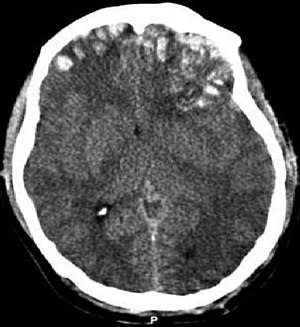Hits to the Head May Result in Chronic Brain Disease
Boston University researchers have unveiled evidence that further supports the link between continuous brain trauma and chronic brain disease. Results published in a respected medical journal delve deeper into the concerns of physical contact sports in a variety of leagues to contribute to numerous studies regarding brain injuries.

It does not matter if a player is playing for a professional league or in one for children in the pewees, according to the medical journal Brain, repeated mild head trauma can be detrimental to the participants’ brain down the line.
“The sheer volume of cases I think is going to just overwhelm anybody that wants to be in denial about the existence of this problem,” Dr. Robert C. Cantu, a co-director of Boston University’s Center for the Study of Traumatic Encephalopathy told ESPN.
Cantu and the researchers analyzed eighty-five postmortem brain samples of people ranging from seventeen- to ninety-eight-years-old. The samples were of those people who had experienced repetitive mild traumatic brain injury in their lives or concussions. Each sample was compared to a contending one of the same age without a history of brain injury.
Some notable athletes included in the study for head trauma were the seventeen-year-old Nathan Stiles a high school player who died from an injury in 2010, and the 1960’s running back Cookie Gilchrist. And at least eighty people in the group were athletes, some of which were also in the military.
Chronic traumatic encephalopathy (CTE) results in the gradual degradation of the brain and was present in sixty eight of the brain specimens studied – all of which had histories of being hit to the head. Evidence of it was found in specimens of fifty American football players and thirty-three of those had played in the National Football league.
Those with mild CTE symptoms claim to have headaches and attention problems. Advanced development of CTE may lead to depression, dementia or aggression.
“This study clearly shows that for some athletes and war fighters, there may be severe and devastating long-term consequences of repetitive brain trauma that has traditionally been considered only mild,” the authors of the study observed.
These findings help contribute to recent brain studies in the science community that dig deeper into the future impact of the brain for those athletes that play contact sports.
Finding evidence of CTE in athletes’ brains before is nothing new. What makes this study resilient however, is that it has been the most extensive thus far. Despite the new findings, there is much to be known about brain injury.
If you or your loved one has played in a contact sport and has developed chronic brain disease as a result, contact our personal injury lawyer today – you may be entitled to compensation!

lawyers are experienced in handling car accident cases and will ensure you get your accident injury claim handeld by an experienced injury lawyer.We can provide you with auto accident attorneys in many cities across the United States of America such as Riverside, Orange County, Los Angeles, San Fernando Valley, Pomona, Ontario, Newport Beach, and San Jose. See our locations section for all cited represented: AA-Accident Attorneys Injury Lawyer Locations. A California Car Accident Lawyer that will fight for you!


